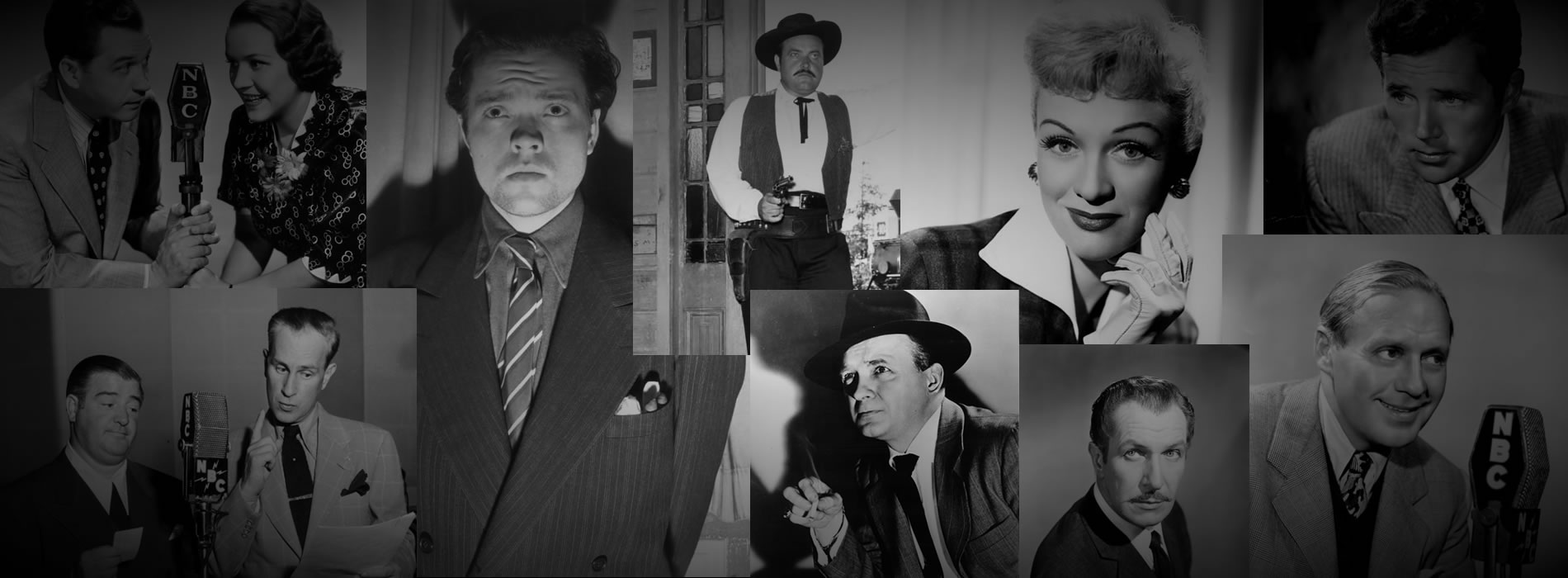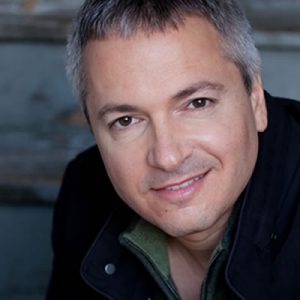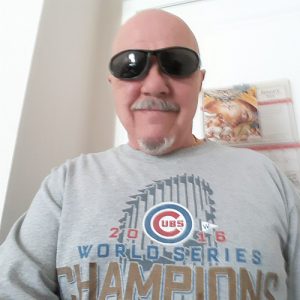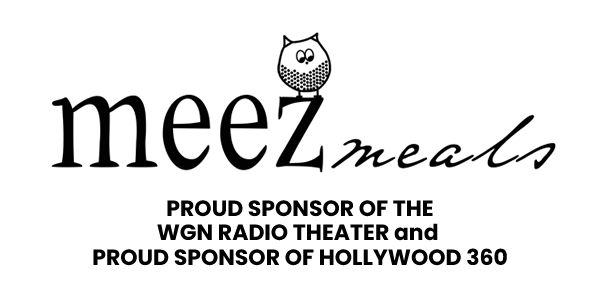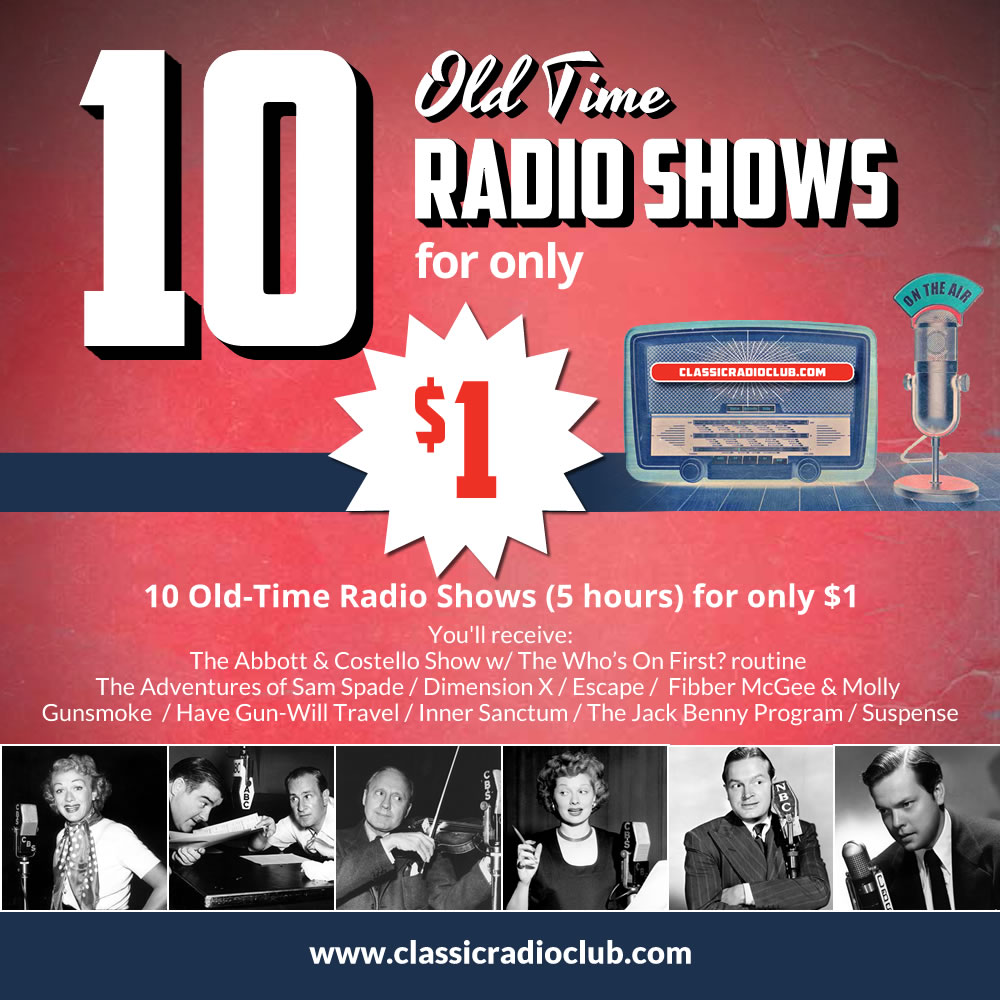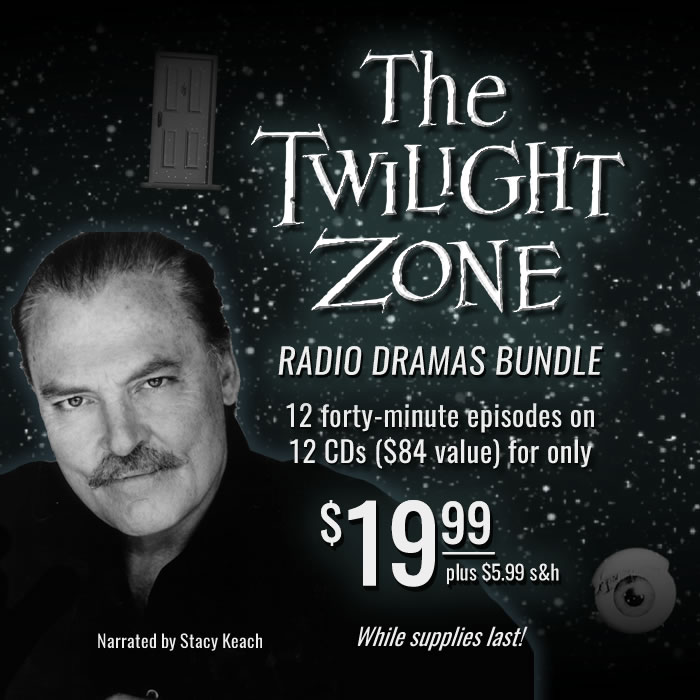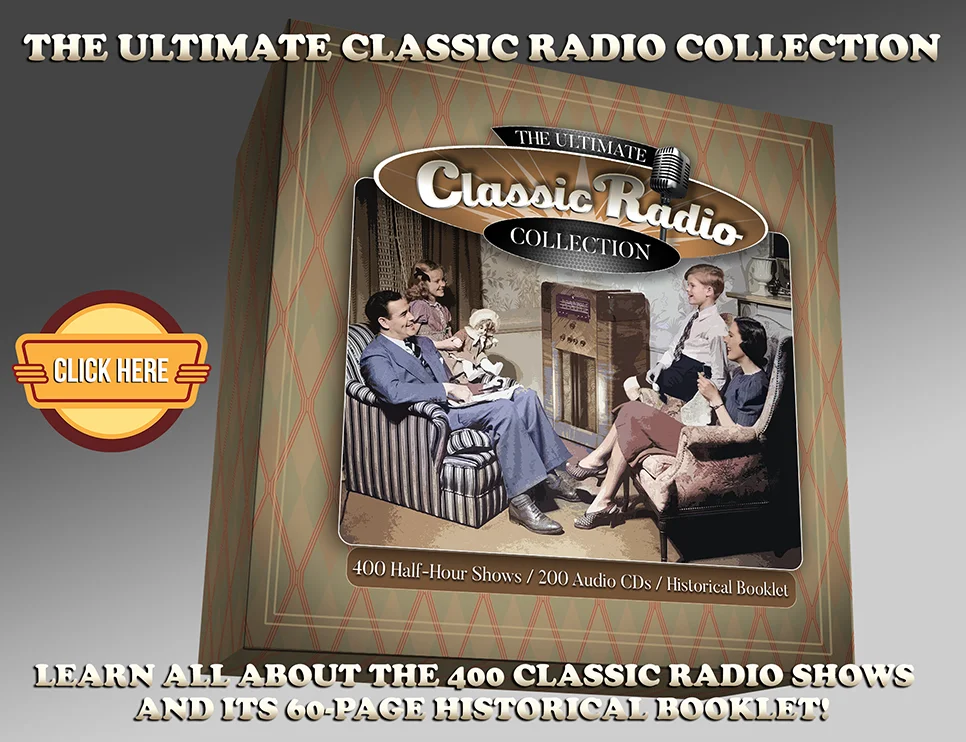
NEWSLETTER | VOL. 10, FEBRUARY 2022
Welcome to this month’s edition of The Hollywood 360 Newsletter, your place to get all the news on upcoming shows, schedule and interesting facts from your H360 team!
Carl’s Corner
by Carl Amari
Hello everyone – here’s the Hollywood 360 Newsletter, February 2022 / Vol. 10. As someone on our mailing list, you’ll receive the most current newsletter via email on the first day of every month. If you don’t receive it by the end of the first day of the month, check your spam folder as they often end up there. If it is not in your regular email box or in your spam folder, contact me at carlpamari@gmail.com and I’ll forward you a copy. The monthly Hollywood 360 newsletter contains articles from my team and the full month’s detailed schedule of classic radio shows that we will be airing on Hollywood 360. Each month I’ll write an article on one of the classic radio shows we’ll present on Hollywood 360. The week of February 12th, 2022 we’ll be airing an episode of GUNSMOKE so here’s an article on this incredible western series. Enjoy!
‘GUNSMOKE’: LAW AND ORDER ON THE RADIO RANGE
By Carl Amari and Martin Grams
There were many Western radio shows during the golden age, but most were aimed at a juvenile audience: The Lone Ranger, Hopalong Cassidy, The Roy Rogers Show, Gene Autry’s Melody Ranch and Wild Bill Hickock.
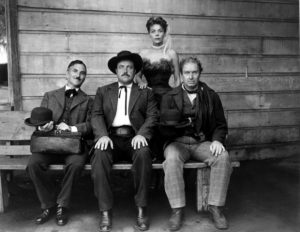 It wasn’t until radio dramas were making way for television that the idea of a Western series strictly for adult audiences was conceived. CBS was investing in the newer and more promising visual medium, and the fortuitous cancellation of another program created an opening for Gunsmoke, a Western series unlike any before it.
It wasn’t until radio dramas were making way for television that the idea of a Western series strictly for adult audiences was conceived. CBS was investing in the newer and more promising visual medium, and the fortuitous cancellation of another program created an opening for Gunsmoke, a Western series unlike any before it.
Developed by Norman Macdonnell, a graduate of Escape and Suspense, the writing for Gunsmoke was high quality, the sound effects top notch, and there was no shortage of violence and bloodshed. Scalpings were rife, bodies rotted on the plains, men were hanged, and frontier life consisted primarily of territorial disputes that neither party could win. As events unfolded, the ever-watchful Marshall Matt Dillon of Dodge City Kansas carried out the duties his shiny badge demanded.
Under the guidance of Macdonnell and talented scriptwriter John Meston, GUNSMOKE aimed to portray the harsh and brutal reality of settlers’ lives. Three geniuses from the CBS sound department – Tom Hanley, Ray Kemper, and Bill James – created the layered sound effects. The sounds of leather on leather, keys in the lock of the jailhouse cell, and horses’ hooves on dusty roads were intricately reproduced.
Within a year, several radio programs tried to emulate GUNSMOKE’s production values. None came close. Gunsmoke paved the way for other adult-oriented radio Westerns, including Have Gun – Will Travel, Fort Laramie and Frontier Gentleman.
In 1955, the program made the transition to television with James Arness starring in the role William Conrad had made his own on radio. The video version featured all the characters we came to know and love from the radio series, but with a totally new cast. Gunsmoke would ultimately make television history by becoming the longest-running U.S.-made Western series.
LEND ME YOUR EARS | THIS MONTH’S SONG: JACK & DIANE, WRITTEN AND PERFORMED BY JOHN MELLENCAMP, RELEASED: 1982
by Lisa Wolf
“Most people don’t ever reach their goals, but that’s cool too. Failure’s a part of what you’re all about anyway. Coming to terms with failed expectations is what counts.” Or, to put it more succinctly, “Life goes on/Long after the thrill of livin’ is gone.” ~ John Mellencamp
Written and recorded in 1982, “Jack & Diane” was one of the tracks that made up his album, American Fool.
It may have been just a “little ditty,” but “Jack And Diane” did big things for John Mellencamp. It went to #1 for four weeks in 1982, turning Mellencamp, 31 years old at the time and then known as John Cougar, into an overnight sensation.
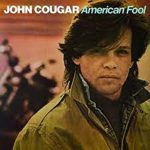 A song about a high school couple falling in love, Mellencamp wrote “Jack & Diane” as a tribute to life in the rural working class. The inspiration was his hometown of Seymour, Indiana, which had a population of about 13,000 when it was released. The song has a very nostalgic feel, but paints a picture of a couple whose best years will soon be behind them.
A song about a high school couple falling in love, Mellencamp wrote “Jack & Diane” as a tribute to life in the rural working class. The inspiration was his hometown of Seymour, Indiana, which had a population of about 13,000 when it was released. The song has a very nostalgic feel, but paints a picture of a couple whose best years will soon be behind them.
The iconic clapping of hands in “Jack & Diane” wasn’t actually meant to be kept in the song. The clapping was to be removed once the song was finished but John Mellencamp realized that “Jack & Diane” couldn’t work without it.
The song was based on the 1959 Tennessee Williams play Sweet Bird of Youth, adapted for Hollywood in 1962 as a romantic-comedy film starring Paul Newman and Geraldine Page.
Vince’s Verbiage: The 1960s
by Carl’s Crabby Brother Vince
Happy February everyone, hope you all had a great holiday season. I’ll start out by saying I don’t much like TV drama shows. I’m more into comedies, action shows and sports. Comedies like The Honeymooners, Married…With Children, Everybody Loves Raymond, King of Queens, Seinfeld and many others. Action shows like MacGyver, Knight Rider, The Fall Guy, It Takes a Thief and others. My favorite sports to watch on TV is MLB Baseball, College & NFL Football and Golf.
However, there is one drama series that spent 4 seasons on ABC every Tuesday night starting in September 1963 that ended in a nail biting 2 episode conclusion in August of 1967. Those final 2 episodes titled “The Judgement” still rank 3rd of all shows after all these years in households tuned in at 72%. Can you guess what TV show I’m talking about? I’m thinking by the name of the final two episodes most of you probably know it was The Fugitive starring David Janssen as Dr. Richard Kimble.
This show absolutely blew me away and I still watch reruns of it every week on classic TV cable channels. The show was based on the real life murder of Cleveland Dr. Sam Sheppard’s wife in 1954. It was a very controversial case and drew nationwide attention. Dr. Sheppard was convicted of her murder but after a decade in prison was exonerated in 1966.
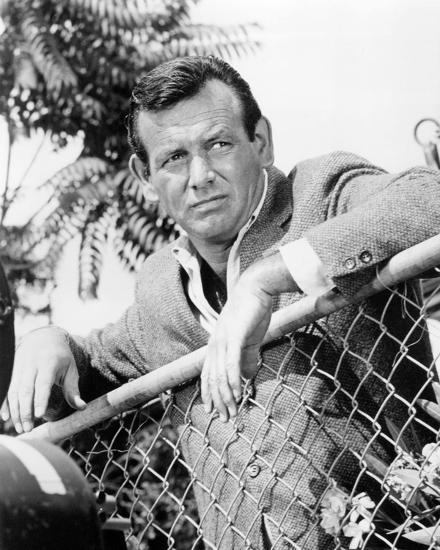 In The Fugitive, Dr. Kimble, although innocent, was convicted of his wife’s murder and sentenced to Death Row State Prison. On the train ride to his final destination, while handcuffed to his nemesis Lt. Philip Gerard, the train derails and crashes and Dr. Kimble escapes. Now he’s on the run to try to find the man he saw running from his home on the night of his wife’s murder. It was a man with one arm missing. Dr. Kimble got a good look at him because he almost ran him over as he was fleeing the murder scene. This terrific series featured many well known guest stars and future stars, including: Bruce Dern, Carroll O’Connor, Jack Lord, Dabney Coleman, Diane Ladd, Melvyn Douglas, William Shatner, Tuesday Weld, Mickey Rooney, Charles Bronson, Angie Dickinson and Ron Howard with a very young Kurt Russell appeared as Lt. Gerard’s son. Dr. Kimble’s wife, although rarely seen, was played by actress Diane Brewster who is known for playing three distinctively different roles in TV series. First, she was confidence trickster Samantha Crawford on the Western series Maverick starring James Garner. She then played the pretty 2nd grade teacher on Leave It To Beaver starring Jerry Mathers before playing doomed Helen Kimble on The Fugitive.
In The Fugitive, Dr. Kimble, although innocent, was convicted of his wife’s murder and sentenced to Death Row State Prison. On the train ride to his final destination, while handcuffed to his nemesis Lt. Philip Gerard, the train derails and crashes and Dr. Kimble escapes. Now he’s on the run to try to find the man he saw running from his home on the night of his wife’s murder. It was a man with one arm missing. Dr. Kimble got a good look at him because he almost ran him over as he was fleeing the murder scene. This terrific series featured many well known guest stars and future stars, including: Bruce Dern, Carroll O’Connor, Jack Lord, Dabney Coleman, Diane Ladd, Melvyn Douglas, William Shatner, Tuesday Weld, Mickey Rooney, Charles Bronson, Angie Dickinson and Ron Howard with a very young Kurt Russell appeared as Lt. Gerard’s son. Dr. Kimble’s wife, although rarely seen, was played by actress Diane Brewster who is known for playing three distinctively different roles in TV series. First, she was confidence trickster Samantha Crawford on the Western series Maverick starring James Garner. She then played the pretty 2nd grade teacher on Leave It To Beaver starring Jerry Mathers before playing doomed Helen Kimble on The Fugitive.
While on the run in search of the one-armed man, Kimble enters the lives of many people in many towns as he needs to work to earn money to survive. All the while trying to stay one step ahead of his relentless pursuit by Lt. Gerard played convincingly by actor Barry Morse. The series consisted of 120 episodes over 4 seasons. The first 3 seasons were in black & white and the final season was in glorious color. Not many shows were in color back then.
David Janssen won the Golden Globe for Best Actor in a TV Drama series in 1965. The Fugitive won the Emmy award as the Outstanding Drama Series of 1966 and was nominated 3 of the 4 years it was on. In 2002 The Fugitive was ranked as TV Guide’s #36 Greatest TV shows of All Time. The one-armed man, played by character actor Bill Raisch, was named the 15th nastiest TV villains also by TV Guide in 2013.
For me as a young teen, this show “knocked it out of the park”. A 1993 film adaptation, directed by Andrew Davis and starring Harrison Ford, was a huge hit and was a great movie. A 2000-2001 reboot of the series starring Tim Daly didn’t catch on probably because the writing wasn’t very good. So even though TV dramas are low on my list The Fugitive was and still is my favorite TV show of all time. Maybe in a bit of sad irony Dr. Sam Sheppard and David Janssen both died at a very young age. Dr. Sheppard was only 46 and David Janssen was only 48.

THE BUSY MR. BINGLE Starring the Infinitely Busy John Brown
by Karl Schadow
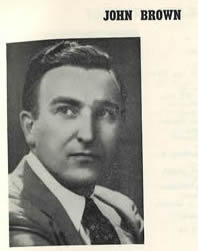
John Brown
His radio resume contains nearly 10,000 performances. Thus, there is a great probability that you have heard the voice (on one of his many interpretations) of John Brown. Noteworthy is that he was the headliner in only two series, The Damon Runyon Theatre and The Busy Mr. Bingle. (Actual broadcasts of a proposed 1937 venture Bruce, Betsy and Baby, produced by Radio Events, Inc. in which Brown was slated as Bruce have not been confirmed.)
A native of England, Brown immigrated to the United States via Australia where he had garnered a majority of his education. In 1934 he entered the New York radio scene with Eddie Cantor and was soon cast by Al Jolson and Fred Allen on their respective programs. Not to be outdone by his competitors, Jack Benny also tapped him for several appearances. Brown was also chosen for dramatic roles on such programs as Arch Oboler’s Plays and Columbia Workshop. For several years, he portrayed Jim Barker on the daytime serial Lorenzo Jones. During the early months of 1943, he held announcing duties on Battle of the Sexes.
The creator of The Busy Mr. Bingle was John L. Sinn, a long-time associate of Frederic W. Ziv. Born and raised in Cincinnati, Sinn entered the field as a writer at one of the country’s premier stations, WLW. In 1935, Ziv was changing the focus of his firm from advertising to radio packaging and hired
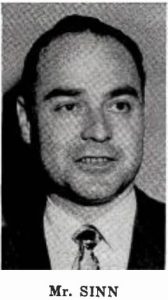
John Sinn
Sinn as his production and writing specialist. (Ziv concentrated on sales.) Sinn soon became a vice-president of the business and in 1941 moved to New York to direct Ziv’s newly opened office on Madison Avenue. Two major programs that he produced were Eye Witness News and The Cisco Kid. The former was a joint transcribed syndicated venture with the Associated Press, whereas the latter a live program on WOR and beamed via the Mutual network. The Busy Mr. Bingle was also a member of this category.
The Bingle escapades debuted as a sustainer at 8:30 pm EWT, Thursday, March 18, 1943. Each of the half-hour sessions commenced and concluded in the office of J. B. Bingle. President of the Bingle Pin Company. As the firm’s chief executive, Brown had a supporting cast of eccentric characters including a personal secretary Miss Pepper (Elizabeth Morgan) and salesman Wizzer (Jackson Beck). Other personnel included office boy Tommy and Clarence the inventor. Mrs. Bingle was portrayed by Ethel Owen with Gee Gee James as the Brown’s maid.
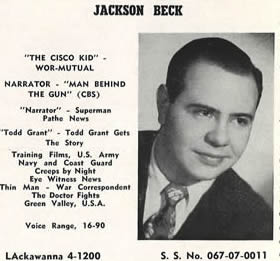
Jackson Beck
The story-line of the initial episode revealed the frolics of a government order of pins made from vegetables that involved too many cooks. It elicited this summation from critic Ben Bodec (Variety, March 24, 1943): “The script gives ample proof of one thing, and that is that the writer possesses one of the cleverest conceits for screwball characterization in the business, but what he does need is some one to feed him boff gags and situations.” The second episode which depicted Bingle employees digging for gold in an adjacent building received a scathing review by Lou Frankel (The Billboard, April 3, 1943) whose concluding statement declared: “But the only asset in the show is John Brown, the title character.”
However, despite the program’s rocky start, the staff of the New York Daily News caught several chapters. In his initial assessment (March 19), Ben Gross admitted: “The basic idea and the dialogue were thoroughly amusing, and John Brown gave an excellent performance in the title role. Some of the supporting characters seemed overdrawn and, at times, the script needed tightening. But on the whole, the series has abundant possibilities, and should provide much laughter for future listeners.” By April 2, Gross exuded this enthusiasm: “Last evening’s installment of this amusing series was much more tightly nit and far more interesting than the proceeding broadcasts.” Additional commentary by Gross’ associate Sid Shalit (April 16) praised the program which: “… is fast developing into a topnotch comedic convulser.” The Busy Mr. Bingle completed its spring trial on June 10, 1943. The single zany extant adventure of the series, in which the company safe is burglarized of $50,000 (with Maurice Tarplin doubling) is available here:
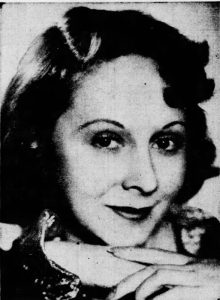
Elizabeth Morgan
Sporadic announcements in trade publications stated that the Bingle follies might continue throughout the summer and possibly into the fall. However, the program did not return to the etherwaves. During the summer of 1943, John Brown was hired by Jack Benny and moved to Hollywood when that entourage commenced its fall 1943 season. Brown’s career would then reach meteoric heights with prominent roles numerous series including A Date With Judy, The Life of Riley and My Friend Irma. John Sinn became president of Ziv Television and then later United Artists Television.
Have questions regarding John Brown or The Busy Mr. Bingle, contact the author at khschadow@gmail.com

MartinGrams.biz: CALLING ALL CARS
by Martin Grams
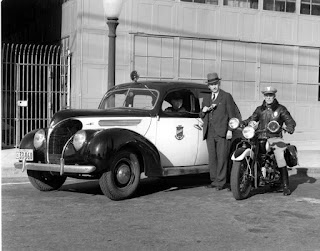 Pre-dating Gang Busters, which today is considered one of the more important cops-and-robbers programs on network radio, was Calling All Cars.
Pre-dating Gang Busters, which today is considered one of the more important cops-and-robbers programs on network radio, was Calling All Cars.
Never heard of Calling All Cars? You should. After listening to two or three recordings I found myself addicted to these. More importantly, there are far more Calling All Cars recordings in existence than Gang Busters and the programs are so similar in nature. If you cannot get enough of Gang Busters and heard all that you can find, give Calling All Cars a try.
Every week a dramatization based on an actual police case file was dramatized, introduced by a real life police officer. (In many cases the officers sound like they are reading the script for the first time.) Among the earliest offerings on the program was a dramatization of the famed Mae West jewel robbery; another focusing on the daring exploits and capture of John Dillinger. To emphasize a “crime does not pay” moral, a post show recap explained how justice was meted out. Sounds much like Gang Busters? Sure does. But to emphasize a cool bit of trivia: Calling All Cars established the format two years before Gang Busters premiered.
Sponsored by the Rio Grande Oil Company, the program premiered in November of 1933 over KHJ in Los Angeles. At first, no one gave much thought to the program, suspecting how popular it would quickly become in an era where cops-and-robbers radio dramas were not a dime a dozen. By mid-1934 there was evidence that the weekly detective program was the most popular originating from the West Coast facilities of CBS. For the first few years, Calling All Cars aired only along the West Coast, restricted to only the territory where the sponsor’s product was distributed. Every broadcast pitched praise from police officers, emergency rescue workers and firemen, exemplifying how the radio listener could experience “police car performance” if they, too, bought gasoline from the Rio Grande Oil Company.
Even the casual listener today will observe that most of the cases dramatized took place in the Southwest with numerous refrences to Los Angeles and palm trees. Criminal capers included dope smugglers, counterfeit bonds, bank robbers, the murder of Secret Service agents, highway robbery, juvenile delinquents, the body of a murder victim found in a schoolhouse, a Russian confidence man, car theft and what else? A gas station holdup, of course. In January 1935, an episode dramatized the San Quentin prison break involving four escaped prisoners who took hostages as they headed north. The actual prison break happened that very week and was the most talked-about subject in the local papers across the West Coast.
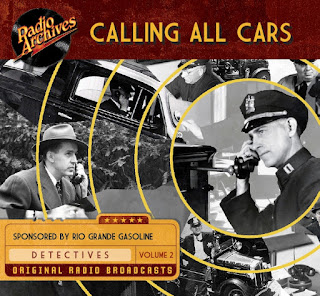 By 1935, Dick Stannard’s KHJ promotional booklet claimed that 68 percent of all Los Angeles listeners tuned in to hear Calling All Cars. And it was in 1935 that G-Men premiered over the airwaves, which would be re-titled to Gang Busters a short time following. Since popularity polls and the unreliable rating system of the time requires a grain of salt, it can be said for certain that Gang Busters was not the first program responsible for the public’s co-operation in helping with the apprehension of a real criminal who evaded police. During that year, movie producer Walter Futter released a film short adapted from a Calling All Cars radio broadcast, inviting theater audiences to cooperate with the Department of Justice in tracking down William Mahan, wanted for the kidnapping of little George Weyerheauser in Tacoma, Washington. A reward for $1,000 was offered for any clue leading to Mahan’s arrest.
By 1935, Dick Stannard’s KHJ promotional booklet claimed that 68 percent of all Los Angeles listeners tuned in to hear Calling All Cars. And it was in 1935 that G-Men premiered over the airwaves, which would be re-titled to Gang Busters a short time following. Since popularity polls and the unreliable rating system of the time requires a grain of salt, it can be said for certain that Gang Busters was not the first program responsible for the public’s co-operation in helping with the apprehension of a real criminal who evaded police. During that year, movie producer Walter Futter released a film short adapted from a Calling All Cars radio broadcast, inviting theater audiences to cooperate with the Department of Justice in tracking down William Mahan, wanted for the kidnapping of little George Weyerheauser in Tacoma, Washington. A reward for $1,000 was offered for any clue leading to Mahan’s arrest.
Beginning February 6, 1936, Calling All Cars became the first instance of a radio program going double-network on the West Coast, both CBS (station KHJ and KNX) and the Don Lee Network (KSFO). While the crime capers continued to originate over KHJ in Los Angles, under the direction of William M. Robson (the same Robson who would direct radio’s long-running Suspense), Fred Shields handled the KNX and KSFO productions with a different cast from that of KHJ, with none of the actors involved with the first two years of the program. (Charles Frederick Lindsley was the narrator for both productions.) KNX was backed up with a 14-piece orchestra under the baton of Wilbur Hatch. (Keeping in mind that lower budget programs relied on a simple organ, not an orchestra, this production was far more ambitious from the original run.)
Through the Spring of 1936, the cast of the KHJ productions went on a six-week tour performing Calling All Cars on stage before the evening’s motion-picture. Dave Broekman, Judy Starr, Paul Keast, and Larry Burke were among the cast. (Fred Harrington was in the radio cast but nothing has been found to verify his participation in the stage production.) A total of 30 bookings were made and because the crew was on tour, the entire group would broadcast locally at each spot on tour for the weekly broadcasts. By late 1936, it was decided to re-broadcast prior Calling All Cars episodes over KHJ instead of producing two different renditions of the same scripts. This is one of the reasons why more than 200 Calling All Cars radio broadcasts exist today in recorded form. The other reason will be explained below.
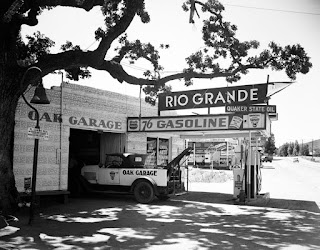 William N. Robson was one of the many directors who was involved with Calling All Cars, even though a number of reference guides mistook director Mel Williamson as an alias for Robson. Samuel C. Pierce and Bill Lawrence were also directors at one time. Pierce won the assignment over two potential directors because he proved he was an expert on penalties attached to defying statutes. Ironically, he gained first-hand knowledge for the radio program while serving a traffic violation sentence of five days. Pierce drew sentence from Municipal Judge Call on the morning of November 10, 1936, who was found guilty of driving 44 miles an hour in a 25 mile zone. With no other option than to serve his sentence, the sponsors took advantage of the incident to use as publicity in the trade columns. But when newspaper reporters used the publicity release as a means of downgrading Calling All Cars in a negative light — the director of a crime program accused of a crime himself — Pierce promptly moved on to other programs.
William N. Robson was one of the many directors who was involved with Calling All Cars, even though a number of reference guides mistook director Mel Williamson as an alias for Robson. Samuel C. Pierce and Bill Lawrence were also directors at one time. Pierce won the assignment over two potential directors because he proved he was an expert on penalties attached to defying statutes. Ironically, he gained first-hand knowledge for the radio program while serving a traffic violation sentence of five days. Pierce drew sentence from Municipal Judge Call on the morning of November 10, 1936, who was found guilty of driving 44 miles an hour in a 25 mile zone. With no other option than to serve his sentence, the sponsors took advantage of the incident to use as publicity in the trade columns. But when newspaper reporters used the publicity release as a means of downgrading Calling All Cars in a negative light — the director of a crime program accused of a crime himself — Pierce promptly moved on to other programs.
In May of 1937, Catholic schools adopted a censorship policy on radio programs. Sister teachers in several schools instructed their students which radio programs they should hear and which ones they should dial out. One parochial school announced that Gang Busters, Calling All Cars and The Court of Human Relations be avoided. The Sisters had good cause. Criminals were depicted on Calling All Cars as smoking dope, using street slang and displaying disrespect for the law. Some concerned parents felt the program was educating their children how to crack safes, how to avoid the pitfalls criminals overlooked, and what law enforcement would be looking for at the scene of a crime.
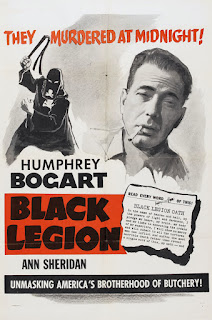 Also in 1937, Charles Frederick Lindsley provided such an effective role as the narrator that as a result of the radio broadcasts, he was hired by Leon Schlesinger to provide commentator background for a number of Looney Toons and Merrie Melodies cartoons, including Porky’s Double Trouble and My Little Buckaroo. Lindsley also supplied the March of Time voice coming over the radio in the 1937 Warner Brothers movie, Black Legion, starring Humphrey Bogart.
Also in 1937, Charles Frederick Lindsley provided such an effective role as the narrator that as a result of the radio broadcasts, he was hired by Leon Schlesinger to provide commentator background for a number of Looney Toons and Merrie Melodies cartoons, including Porky’s Double Trouble and My Little Buckaroo. Lindsley also supplied the March of Time voice coming over the radio in the 1937 Warner Brothers movie, Black Legion, starring Humphrey Bogart.
In January of 1938, the program was pre-maturely discontinued after the sponsor, the Rio Grande Oil Company, made a sudden decision to curtail advertising expenses. They provided four weeks’ notice to the network. Within a few days the cancellation was withdrawn. The oil company decided to augment the cast and orchestra of Calling All Cars and allot the addition of guest stars for its 1938 set-up over the KNX Pacific Coast outlet. Executives at Rio Grande initially decided to increase their advertising budget for the coming year by including additional newspaper and billboard display copy, but restructuring the production costs of the radio program ensured continued sponsorship… but only on network. The re-broadcasted programs were cancelled in favor of a women’s daytime program, which Rio Grande Oil believed would expand their coverage.
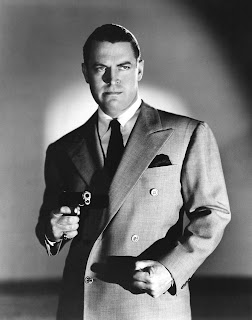
Actor Chester Morris
Celebrities who began making appearances on Calling All Cars beginning in 1938 included Lyle Talbot, Edmund Lowe, Charles Bickford, Chester Morris, and Grant Withers, among others. Rarely promoted, celebrity guest appearances was practically a waste of money at the price Rio Grande was paying. It was essential to promote in newspapers and other advertising copy up-coming appearances of Hollywood celebrities — this Rio Grade did not apply. Celebrity guest appearances, along with high production values, may have been why the program was awarded a trophy in December for being the most consistently excellent program broadcast in the Western U.S. in 1938. Exactly who awarded the trophy remains unknown to this day but executives at Rio Grande and the advertising agency were pleased to receive the award.
Commercially, the program was a huge success. In 1938 Parker Brothers issued a board game based on the radio program. Even more rare is the 1934 Junior Police Kit, the 1934 Junior Detective Kit, the 1934 Junior Police Money premiums, the 1936 Junior Detective Outfit, the 1934 and 1935 “Calling All Car News” pamphlets, and the 1934 “Calling All Cars Radio Log.” With the exception of the Parker Brothers game, the other premiums are almost impossible to find today. (Guest Noah Beery was enrolled as a lieutenant in the Rio Grande Junior Police Force in one episode.) CBS gained larger profits by syndicating the program in Africa, New Zealand, Australia and Canada. The program was also translated into Spanish.
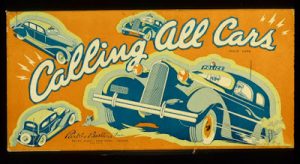
The Calling All Cars game.
For these relatively few years, Calling All Cars rolled along the lanes as a business stimulator for the petrol outfit; but success bred challenges. The calendar year of 1938 provided both the network and the sponsor legal troubles. When the American Federation of Musicians upped the wage scale from $10 to $18 per hour each, for musicians, this caused a number of syndicated radio programs to apply a cost-cutting measure evidenced in the later episodes of Calling All Cars, dropping music entirely and using only sound effects such as a police whistle, siren, screeching of tires and racing motors to provide the kickoff.
In January of 1938, the sponsors of Calling All Cars were sued for $25,000 in damages by Angelo Freni, who claimed he was wrongfully and unlawfully exposed as to his past life on the broadcast of December 20. Freni’s complaint stated that prior to 1931, he admitted to having criminal tendencies and a conviction on a forgery charge. Freni claimed that after 1931 he changed and led an exemplary life. CBS fought the case, claiming the details of his criminal actions were extensively documented in newspapers and thus public knowledge even before the radio broadcast. (Phillips H. Lord suffered the same challenge in courts for a number of Gang Busters radio broadcasts.) The court eventually upheld CBS’s defense.
By late 1939, the U.S. Courts upheld the right of an individual to sue broadcasting companies and program sponsors for invasion of privacy, handed down in San Francisco by Federal Judge A.F. St. Sure. The decision was made in denying motion of Rio Grande Oil Company, sponsors of Calling All Cars, to dismiss the suit brought by Howard Mau for unauthorized use of his name on the show. This turned out to be the first case on record in the state of California to challenge a radio broadcast with the claim of privacy rights invasion. Mau’s suit asserted Calling All Cars program of August 4, 1938, aired details of a robbery in 1937 during which complainant, a chauffeur, was held up and badly wounded by a bandit. Mau claimed that since the broadcast he was subject to acute nervous attacks at the mention of the shooting and program’s authorized use of his name caused considerable mental anguish. For Lord, the courts upheld that criminals, while incarcerated, had no rights whatsoever regarding their criminal exploits being dramatized over the air and the producers of Calling All Cars began verifying the criminals were indeed incarcerated before broadcast.
Nothing has been found to verify Mau won or lost the case, or whether it was settled out of court. But the fear of future legal challenges was a risk the Rio Grande Oil Company wanted to avoid and by January 1940, withdrew from their six-year sponsorship. (According to one source, Rio Grande dropped sponsorship as a result of a merger with Richfield Oil.)
By 1939, J. Donald Wilson took over the task of producing and directing. Wilson would ultimately create another mystery program for CBS, The Whistler. Today, recordings of Calling All Cars from 1939 demonstrate some of Wilson’s pre-Whistler productions and are worthy of comparison.
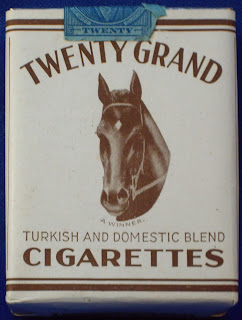 Calling All Cars expanded to the Midwest beginning in January of 1939, when Twenty Grand Cigarettes purchased the disc rights for use on KMOX in St. Louis and WJR in Detroit. Calling All Cars was also heard over a number of radio stations in the Midwest for Ford Motors (circa February and March 1940), but while Rio Grande was no longer involved by then, the timing was not good. In June 1940 a suit for $60,000 in damages was filed against CBS and Richfield Oil by Thelma Samson of San Pedro, who charged she was shamed and disgraced by a broadcast associating her with a criminal and assailing her character.
Calling All Cars expanded to the Midwest beginning in January of 1939, when Twenty Grand Cigarettes purchased the disc rights for use on KMOX in St. Louis and WJR in Detroit. Calling All Cars was also heard over a number of radio stations in the Midwest for Ford Motors (circa February and March 1940), but while Rio Grande was no longer involved by then, the timing was not good. In June 1940 a suit for $60,000 in damages was filed against CBS and Richfield Oil by Thelma Samson of San Pedro, who charged she was shamed and disgraced by a broadcast associating her with a criminal and assailing her character.
In desperation of competing against NBC’s coast-to-coast lineup of prestigious programs, CBS revived Calling All Cars for a brief spell in December of 1940, broadcast regionally on Sunday afternoons over KNX, with Frank Graham in the lead. The cops and robbers fare went up against Edgar Bergen and Charlie McCarthy. CBS’ attitude was, publicly, ‘What’ve we got to lose?” The revival was all-too brief. This final version of Calling All Cars was directed by Charles Vanda and scripted by Harold Medford, the same two men who would have greater success in the summer of 1942 when they launched a radio program many fans of old-time radio today known as Suspense.
Hollywood 360 Schedule
2/5/22
The Bing Crosby Show 2/16/53 w/ guest, Jack Benny
Dangerous Assignment 12/30/50 When a Friend is Not a Friend
Mr. Keen, Tracer of Lost Persons 4/23/52 The Mother’s Plea Murder Case
Our Miss Brooks 10/24/48 Birthday Bite, Surprise Party
WhiteHall 1212 4/20/52 The Case of Manerva Bannerman
2/12/22
The Adv. of Philip Marlowe 10/10/49 The Panama Hat
You Bet Your Life 4/13/57 Secret Word: Face
Gunsmoke 7/12/52 The Boughten Bride
The Life of Riley 1/17/48 The Telephone is Rationed
Murder at Midnight 11/4/46 Heavy Death
2/19/22
Arch Oboler’s Plays 4/26/45 The House I Live In
The Great Gildersleeve 11/29/42 Attending the Theater
Mr. President 7/31/49 George Washington
The Line-Up 11/12/52 Buggered Bunco Boys
X Minus One 7/14/55 Dr. Grimshaw’s Sanitorium
2/26/22
The CBS Radio Workshop 2/17/57 Space Merchants Pt. 1
The CBS Radio Workshop 2/24/57 Space Merchants Pt. 2
The Jack Benny Program 1/5/47 w/ guests, Bogart & Bacall
The Man Called X 3/17/51 Student Riots at Leiden
Philo Vance, Detective 6/6/50 The Alibi Murder Case
© 2022 Hollywood 360 Newsletter. The articles in the Hollywood 360 Newsletter are copyrighted and held by their respective authors.

